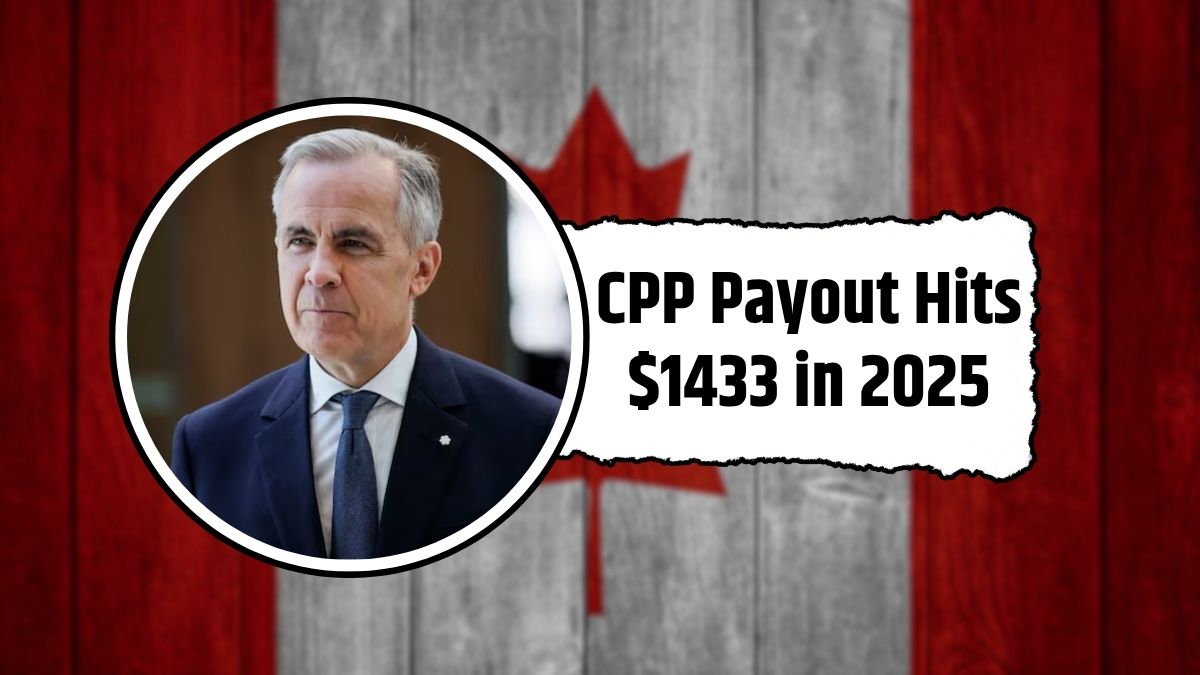In 2025, the Canada Pension Plan (CPP) will provide a maximum monthly retirement payment of $1,433, representing a meaningful increase for thousands of eligible Canadians. This development reflects the government’s commitment to strengthening financial security for retirees amid inflation and rising living costs.
The enhanced benefit offers a vital lifeline for those who depend on public pensions in their later years. But to receive the full amount, understanding the eligibility rules, contribution requirements, and timing strategies is essential.
What Is the Canada Pension Plan (CPP)?
The Canada Pension Plan is a mandatory social insurance program aimed at providing retirement income, disability coverage, and survivor benefits to working Canadians and their families. It covers all provinces except Quebec, which operates the separate Quebec Pension Plan (QPP).
Funded through employee and employer payroll deductions—or full contributions by the self-employed—the CPP ensures monthly financial support for retirees. Payments are adjusted annually to reflect changes in the cost of living, keeping pace with inflation.
Who Can Receive the $1,433 Maximum CPP in 2025?
To qualify for the full $1,433 monthly retirement pension in 2025, you must meet all of the following criteria:
- Be at least 65 years old
- Have contributed to the CPP for at least 39 years
- Earned at or above the maximum pensionable earnings level each year during those 39 years
- Begin receiving CPP exactly at age 65
Starting your pension before age 65 will result in reduced payments, while delaying CPP up to age 70 can increase monthly benefits by up to 42%.
2025 CPP Contribution Rates and Limits
Contributions to CPP are based on earnings and vary depending on your employment status. Here’s how the rates break down for 2025:
| Contributor Type | Contribution Rate | Income Range | Max Annual Contribution |
|---|---|---|---|
| Employee | 5.95% | $3,500 – $69,700 | $4,034.10 |
| Employer | 5.95% | $3,500 – $69,700 | $4,034.10 |
| Self-Employed | 11.90% | $3,500 – $69,700 | $8,068.20 |
| Additional (CPP2) | 4.00% | $69,700 – $79,400 | $396.00 |
These contributions help fund not just retirement benefits, but also disability, survivor, and death benefits under the broader CPP umbrella.
Types of CPP Benefits and Payment Amounts for 2025
While the retirement pension is the most commonly discussed benefit, the CPP also offers other vital forms of support. Here’s a snapshot of the maximum monthly and one-time CPP payments in 2025:
| Benefit Type | Maximum Payment |
|---|---|
| Retirement Pension (Age 65) | $1,433.00 |
| Disability Benefit | $1,673.24 |
| Survivor’s Pension (65+) | $859.80 |
| Survivor’s Pension (<65) | $770.88 |
| Children’s Benefit (per child) | $301.77 |
| Death Benefit (one-time) | $2,500.00 |
However, most Canadians do not receive the full amount. The average CPP retirement benefit is currently around $845 per month, reflecting differences in contribution years and earnings.
How to Maximize Your CPP Retirement Income
To get the most value from the CPP, strategic planning is key. Consider the following tips:
- Contribute the maximum amount for at least 39 years
- Delay collecting CPP until after age 65 to increase monthly payments
- Work past age 65, as contributions beyond this age can earn post-retirement benefits
- Use drop-out provisions to exclude low-income years (due to child-rearing, unemployment, etc.) from your pension calculation
These tactics can significantly boost your retirement income and give you more stability later in life.
How to Apply for CPP Benefits
Applying for CPP is straightforward and can be done in several ways:
- Online via your My Service Canada Account
- By mail with a completed CPP application form
- In person at a Service Canada office
You can submit your application up to 12 months before you want the pension to begin. Payments are typically issued monthly via direct deposit, ensuring a reliable stream of income.
Why the CPP Boost Matters in 2025
In today’s challenging economic environment, a monthly CPP payment of $1,433 can play a critical role in sustaining retirees. It’s especially significant for those relying on government pensions as a primary source of income.
The increased benefit complements other federal programs like Old Age Security (OAS) and the Guaranteed Income Supplement (GIS). When used together with personal retirement savings, CPP can help build a more complete and secure financial future.
Planning for Retirement? Here’s What You Should Do Now
Whether you’re years away from retirement or already planning to apply, it’s important to:
- Review your CPP contribution history through your online account
- Estimate your future pension using the government’s CPP calculator
- Evaluate whether delaying CPP or combining it with other benefits makes sense
- Consult a financial advisor to build a strategy based on your personal goals
Being proactive can make the difference between barely getting by and enjoying your retirement with peace of mind.
Frequently Asked Questions (FAQs)
Q1: Can I receive the full $1,433 CPP if I start collecting at age 60?
No. If you begin at age 60, your benefit is reduced by 0.6% for each month before 65—up to 36% lower than the full amount.
Q2: Is CPP adjusted for inflation?
Yes. CPP benefits are indexed annually in January based on the Consumer Price Index (CPI) to help maintain purchasing power.
Q3: Can I receive other benefits while on CPP?
Yes. You may qualify for Old Age Security (OAS), Guaranteed Income Supplement (GIS), or a Survivor’s Pension—depending on your circumstances.



